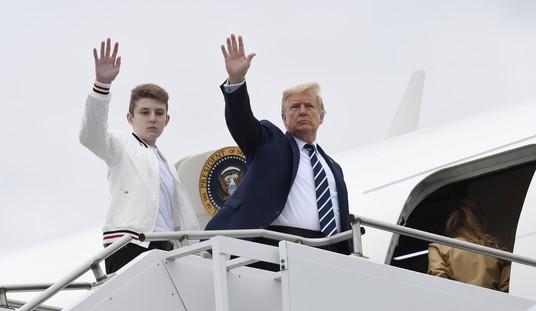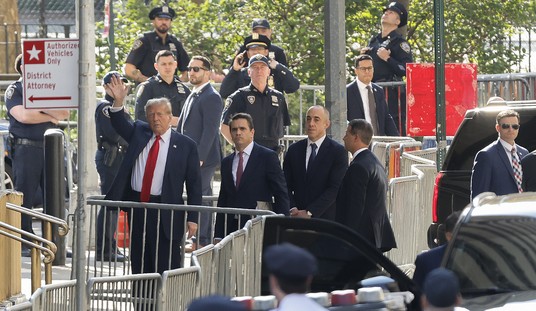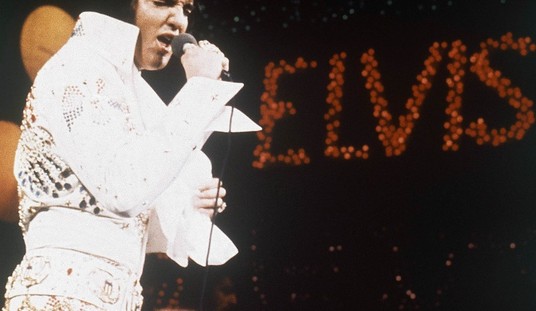In the New York Post, Michael Walsh writes that “Wisconsin is a test battleground in the War of 2012, with both sides pouring in men and materiel in a proxy fight:”
Let’s be clear about what’s at stake in Wisconsin, where the battle between Gov. Scott Walker and the public-employees’ unions is now well and truly joined. It’s not just about balancing the state budget, nor simply about collective bargaining. It’s not even about the future of the labor movement.
It’s about the future of the country and who is to be master — the voters or the “public servants.”
It’s the Tea Party, as represented by Walker and the state Republicans, versus a labor-union/political racket as morally rancid as anything in “On the Waterfront,” fronted by the “sick” teachers and abetted by President Obama and his Organizing for America community agitators.
* * * The outcome in Madison will determine what happens around the country — not just in Ohio, the likely next battleground, or New York and California, but also in Washington, DC.
It’s a fight the nation’s private sector can’t afford to lose.
“All government employees should realize that the process of collective bargaining, as usually understood, cannot be transplanted into the public service. It has its distinct and insurmountable limitations when applied to public-personnel management. The very nature and purposes of government make it impossible for administrative officials to represent fully or to bind the employer in mutual discussions with government-employee organizations. The employer is the whole people . . . ”
Walker? House Speaker John Boehner? No, President Franklin Delano Roosevelt, back in 1937.
Yes, as awesome as John Kennedy was in other areas, we have him to thank for expanding the role of unions in the public sector, as Jonah Goldberg writes in the L.A. Times today:
Do you recall the Great DMV cave-in of 1959? How about the travails of second-grade teachers recounted in Upton Sinclair‘s famous schoolhouse sequel to “The Jungle”? No? Don’t feel bad, because no such horror stories exist.
Government workers were making good salaries in 1962 when President Kennedy lifted, by executive order (so much for democracy), the federal ban on government unions. Civil service regulations and similar laws had guaranteed good working conditions for generations.
The argument for public unionization wasn’t moral, economic or intellectual. It was rankly political.
Traditional organized labor, the backbone of the Democratic Party, was beginning to lose ground. As Daniel DiSalvo wrote in “The Trouble with Public Sector Unions,” in the fall issue of National Affairs, JFK saw how in states such as New York and Wisconsin, where public unions were already in place, local liberal pols benefited politically and financially. He took the idea national.
The plan worked. Public union membership skyrocketed and government union support for the party of government skyrocketed with it. From 1989 to 2004, AFSCME — the American Federation of State, County and Municipal Employees — gave nearly $40 million to candidates in federal elections, with 98.5% going to Democrats, according to the Center for Responsive Politics.
Why would local government unions give so much in federal elections? Because government workers have an inherent interest in boosting the amount of federal tax dollars their local governments get. Put simply, people in the government business support the party of government.
While Michael Walsh calls Wisconsin a proxy civil war, Mark Steyn flashes back to a post he wrote on the “cold civil war” in 2008 in the process of giving us “The state of the union on Presidents Day 2011:”
1) In Wisconsin, politicized doctors pass out fake medical notes to politicized teachers;
2) In New York, pampered, boorish Ivy League narcissists jeer “Racist!” at a veteran who took 11 bullets in a firefight in Iraq;
3) Notwithstanding Nir Rosen’s self-detonating leftie misogyny, union thugs offer to give the full Lara Logan to “teabaggers”;
4) In Idaho, “public servants” pay a visit to the mother of a reform-minded Schools Superintendent.
I wrote a few years ago about America’s “cold civil war“. It’s less and less civil, and heating up.
Indeed it is — I did a Silicon Graffiti video titled “the Cold Civil War” this past summer, in which I attempted to explore the kabuki theater feel of so many events in the Middle East such as the Gaza flotilla and “Pallywood,” and how small skirmishes become world wide events — provided that there are 17 network mincams around to cover them. I tried to contrast that with how the Tea Parties were using DNC and MSM-approved video ambush techniques to stake their turf. Production-wise, it was one of my more ambitious clips, with multiple sets, digital models, plenty of B-Roll, and the like, but in retrospect, I might have been better off doing a two-parter, as this one may have gotten too long and abstract for its own good.
But in any case, since what’s going on in Wisconsin (and now, apparently Indiana) appears very much to be the flip-side of the Tea Party protests of last year, here’s a refresher on how we covered “the Cold Civil War,” as it stood last year:









Join the conversation as a VIP Member